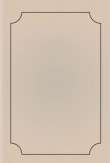You are here
قراءة كتاب A Manual of the Malay language With an Introductory Sketch of the Sanskrit Element in Malay
تنويه: تعرض هنا نبذة من اول ١٠ صفحات فقط من الكتاب الالكتروني، لقراءة الكتاب كاملا اضغط على الزر “اشتر الآن"

A Manual of the Malay language With an Introductory Sketch of the Sanskrit Element in Malay
This e-text includes characters that will only display in UTF-8 (Unicode) file encoding:
ḳ, ḥ, ṭ, ḍ, ṇ, ṃ, ṛ (letters with dot under: except ḳ and ḥ, these are used only in Sanskrit words)
ṅ (n with dot over, in Sanskrit words)
ă, ĕ, ŭ (vowel with breve or “short” sign: only ĕ is common)
ā (a with macron or “long” sign)
If any of these characters do not display properly—in particular, if the diacritic does not appear directly above the letter—or if the apostrophes and quotation marks in this paragraph appear as garbage, you may have an incompatible browser or unavailable fonts. First, make sure that the browser’s “character set” or “file encoding” is set to Unicode (UTF-8). You may also need to change your browser’s default font.
In the section on Sanskrit origins, anusvara was printed as m̃ (m with tilde). It has been changed in this e-text to ṃ (m with dot under) for more reliable display. Note also that ś is written as ç, ṣ as sh, and ṛ as ṛi.
Footnote 53 of the Introduction refers to “the peculiar vowel sound represented in Arabic by the letter ain ... denoted by the Greek rough breathing”. The reference is to the glottal stop. It is represented in this e-text with a single opening quote ‘ because this will display more reliably than the printed text’s ‛ or ῾ (“Greek rough breathing”, equivalent to a “reversed high-nine” single quote).
A few typographical errors have been corrected. They are shown in the text with mouse-hover popups. Hyphenization is as in the original. Note that in modern written Malay, hyphens are generally not used except in duplications such as “siapa-siapa”.
Contents
|
A
MANUAL OF THE MALAY LANGUAGE.
NEW WORKS ONMALAY LANGUAGEHANDBOOK OF THE MALAY LANGUAGE, for the Use of Tourists and Residents. By Kelly and Walsh. |


